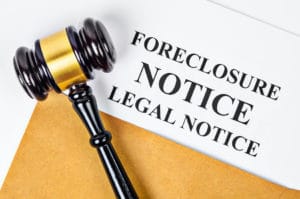 Whether due to financial difficulties or the need to move to a new location, short sales allow a homeowner to sell the home for less than the loan balance. Because the sale price will not cover repayment of the mortgage in full, lenders must issue their approval of a short sale, which is why there are many important steps for homeowners to follow.
Whether due to financial difficulties or the need to move to a new location, short sales allow a homeowner to sell the home for less than the loan balance. Because the sale price will not cover repayment of the mortgage in full, lenders must issue their approval of a short sale, which is why there are many important steps for homeowners to follow.
While working with an experienced real estate professional is the first step, homeowners can use this guide to better understand how to successfully sell a short sale.
For informational purposes only. Always consult with an attorney, tax, or financial advisor before proceeding with any real estate transaction.
Before a Short Sale
Before listing the property, homeowners must confirm if their lender and possible lien holders will accept a short sale as opposed to foreclosure or another option, as short sales are reserved for those facing serious financial difficulty or experiencing a decrease in their property values. Homeowners must reach out to their lender to confirm if they will qualify for a short sale and ask to speak to the person who authorizes this type of sale to receive accurate information. The lender will require the homeowner to send a letter detailing their request and explaining the applicable hardship. In addition to the letter, the homeowner must include proof of the hardship in the form of:
- Bank statements
- Profit and loss statements
- Pay stubs
Any supporting documentation to prove a homeowner’s financial situation does not support repayment of the mortgage will help lenders understand why a short sale is needed. Additionally, homeowners must understand the total amount owed on the property, including any and all liens involved, in order to assist in negotiations with buyers if approved to move forward with the short sale.
How to Complete a Successful Short Sale
In order to make the short sale a success, homeowners must take all the right steps. Although they may work alongside a skilled real estate agent, knowing what to expect in advance helps homeowners overcome barriers. The following information details the most important steps in the short sale process.
Call the Lender and Engage with Professionals
The first step in completing a short sale is to contact the lender, as they will help homeowners determine if they qualify for this option and how to best proceed. Homeowners can make the call themselves or ask their real estate agent to assist them with this step. Homeowners will likely need to meet in person with the loss mitigation department at the bank, where the lender will explain the requirements and all associated costs. With this information, homeowners can determine if a short sale is the best option or ask the lender for additional alternatives to foreclosure, as many options are available to help those who are experiencing temporary or permanent financial difficulties.
If the short sale will work for their needs, homeowners can move onto the next step in the process. However, it’s important for them to understand that as they move through the steps, it becomes more difficult to back out. Therefore, they should take enough time to evaluate the pros and cons before continuing with their decision.
Submit a Letter of Authorization
The letter of authorization allows the lender to discuss the short sale with the assigned attorney or real estate agent. Without this document, the lender can only speak with the named borrower about the loan and property details.
While writing this letter, the homeowner will need to include the following information:
- Name of the borrower
- Address of the property
- Account number for the loan
- Name and contact information of authorized individuals allowed to speak with the lender
Once this has been completed, the homeowner must send the letter by certified mail.
Preliminary Net Sheet
In order to accept offers that have a chance of being approved by the lender, homeowners must understand what is due on the property by requesting a preliminary net sheet, a document outlining how much of the sale’s proceeds will go to each entity plus details of the closing costs.
Beyond the outstanding payments, the expenses listed in this document include:
- Agent commissions
- Attorney fees
- Title insurance charges
- Recording fees
Although the lender may cover the closing expenses upfront, they can return with a deficiency judgement to collect from the homeowners. The deficiency judgement allows them to collect the difference between the sales price and total amount due on the loan principle.
Because the short sale will not cover the total amount due on the mortgage, it is not likely subsequent lien holders will receive payment and in turn may prevent them from coming to a mutual agreement on the sale.
Proof of Income and Assets/Copies of Bank Statements
Homeowners must prepare a hardship letter for the lender and all lien holders to review before moving forward with the short sale. The hardship letter details the financial difficulties the homeowner is facing and outlines their preferred methods of resolving the problem.
Many lenders will consider a variety of short-term and long-term difficulties as a reason to pursue a short sale, including:
- Job loss
- Illness or injury
- Reduced income
- Job transfer
- Divorce
Sometimes, the need for major repairs on the property counts as a hardship because it requires considerable funds to resolve. In all of these situations, fulfilling the mortgage terms often becomes too difficult to sustain, prompting the need for a solution.
Homeowners must explain their personal financial difficulties and include their request for short sale approval and any other foreclosure alternatives they would consider. Additionally, they will need to add proof of their claims in the form of pay stubs, bank statements, and any other supporting documentation to show their current financial status.
Comparative Market Analysis
To determine the best sales price for the property, homeowners need their real estate agent to prepare a comparative market analysis before listing the property. Agents examine active and pending listings along with sale statistics across the last six months to create a clear picture of the current market. They can also browse expired listings to determine which homes were unfairly priced or otherwise undesirable to buyers.
With this information in hand, real estate agents will create a report using information from the comparable properties, which should match the short sale property’s:
- Square footage
- Age
- Location
- Features
- Finishes
After these findings, agents will create a report that shows an ideal sales price range for the home.
Homeowners can compare this range to the preliminary net sheet findings to determine if the short sale will cover enough of the loan and/or liens. At this point, they are ready to prepare and list the property within the given range.
Purchase Agreement and Listing Agreement
With the home placed on the market, real estate agents will begin showing the property to interested buyers. With short sales, it is not likely that the amount proposed will fully cover the loan and liens, which is why lenders want a copy of the offer for their own consideration, as do all lien holders.
Homeowners will need to send any offers in addition their hardship letter and other documents for the lender’s consideration, which can result in a long waiting period for buyers and additional negotiations later on. Lenders often want to renegotiate the terms and fees with the buyer to get the most out of the property. Additionally, lenders may refuse to cover certain inspections and protection plans preferred by the buyers.
Once these steps have been completed, the lender will need to either approve or deny the offer. If they issue a denial letter, homeowners will need to start the process over of finding a buyer who will put in a higher offer or negotiate on key terms. With the lender’s approval, however, the process moves on to the closing stage.
Short Sale Closing and Post Closing
Upon approval of the offer, the buyer is given a chance to complete an inspection. They must cover the inspector fees and work with the homeowner to schedule the visit. The inspector will let the buyer know if the property requires any repairs at that time. If so, the buyers can negotiate to have the homeowners complete the repairs or further reduce the price to cover the work.
The title company will then transfer ownership of the property to the buyer. The current homeowner will need to vacate the property by the given date on the closing paperwork. The proceeds of the sale go to the lender and any lien holders, though that is rare with short sales.
If the lender is allowed, they may pursue a deficiency judgement to collect the difference between the sales price and mortgage balance from the homeowner. In order to do this, the lender will need to go through the court system, which can take several months to complete. If the court rules in the lender’s favor, the homeowner will need to repay the difference within the given schedule.
Because there are many people involved, a short sale can take a considerable amount of time to complete. By taking the right steps, homeowners can prevent delays and keep the process moving forward with the help of a real estate agent.
For informational purposes only. Always consult with an attorney, tax, or financial advisor before proceeding with any real estate transaction.



